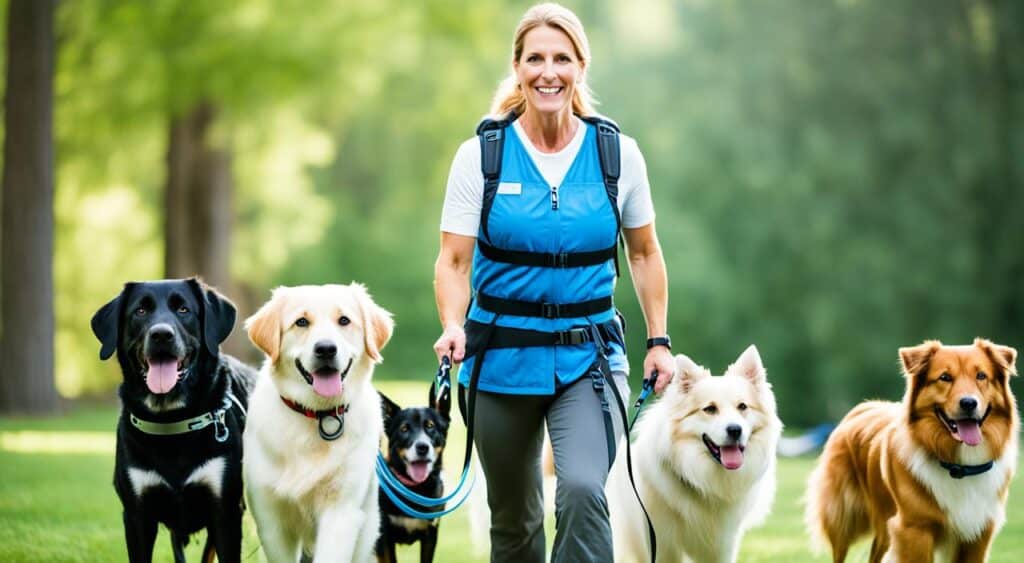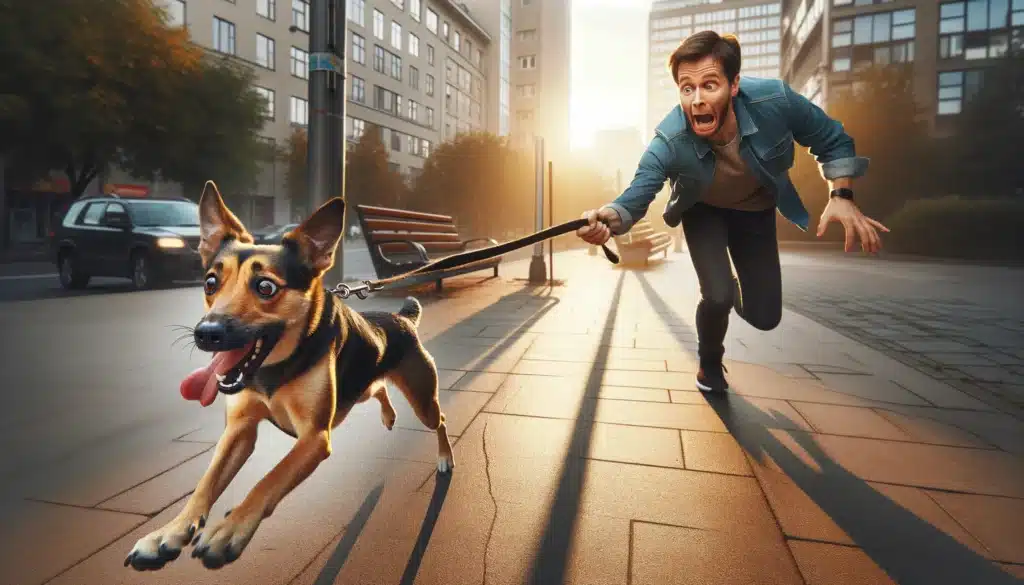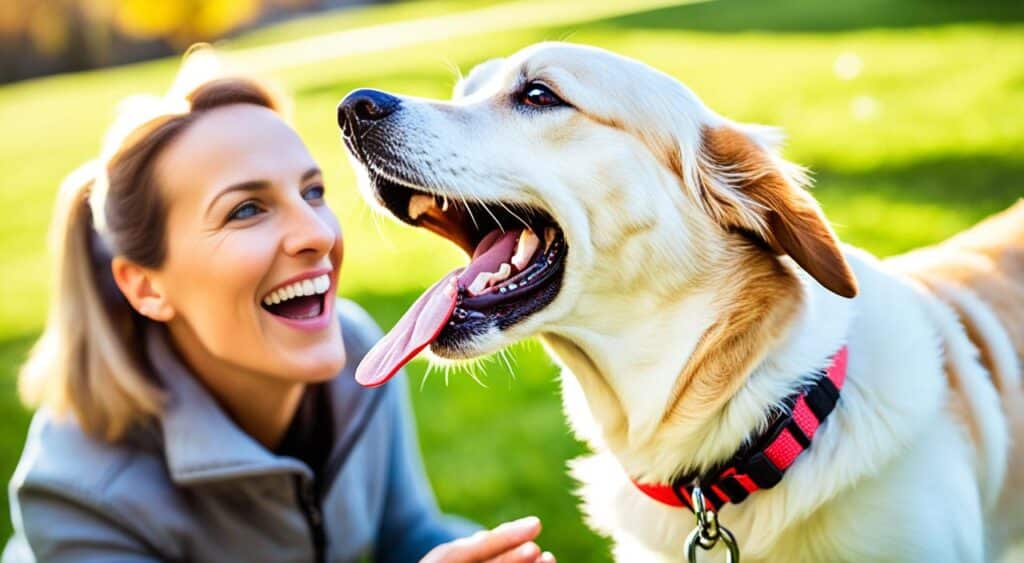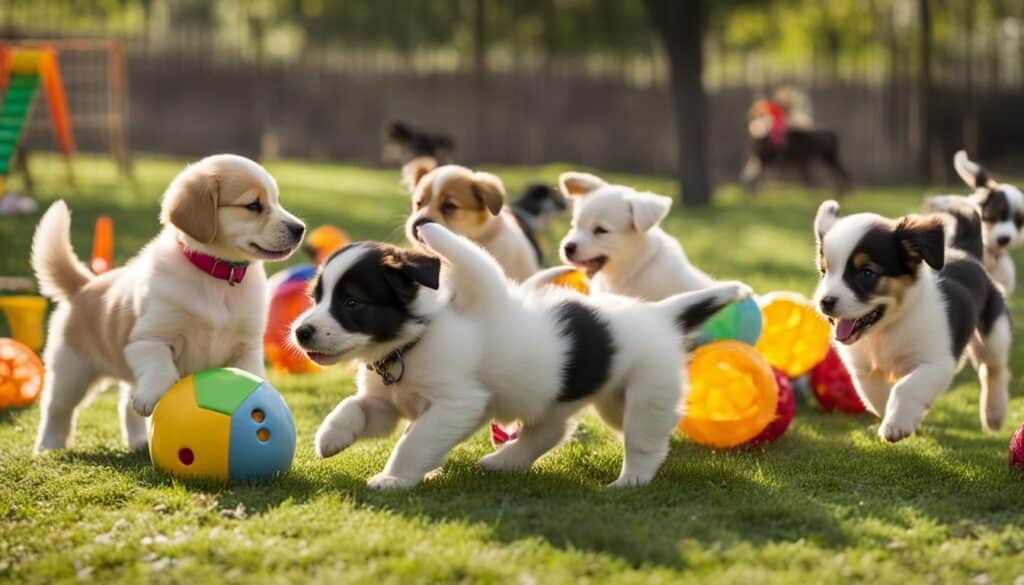Frustrated by constant leash pulling during walks? Do you long for peaceful strolls with your furry friend? Look no further than professional dog training to achieve ultimate leash control and master the art of loose leash walking. With the proper guidance and techniques, you can enjoy pleasant walks with your dog while ensuring their safety and obedience.
This comprehensive guide will explore the ins and outs of loose leash walking and highlight the benefits of professional dog training. From understanding why dogs pull on the leash to practical training tips, this article will equip you with the knowledge and tools to teach your dog how to walk calmly by your side.
By implementing the strategies outlined in this article, you can say goodbye to the frustration of leash pulling and hello to enjoyable, relaxed walks with your dog.

Key Takeaways:
- Loose leash walking can be achieved through proper training techniques.
- Professional dog training is essential for teaching your dog leash control.
- Understanding why dogs pull on the leash can help in addressing the issue.
- Using the right leash and rewarding your dog for good behavior are critical elements in loose leash walking.
- Maintaining consistency and patience are crucial when training your dog to walk on a loose leash.
Why is loose leash walking essential for your dog?
Proper leash walking is essential for your furry companion’s overall well-being and happiness. This section will explore why loose leash walking is crucial for your dog’s physical and mental health.
Why do dogs pull on the leash?
Many dogs naturally tend to pull on the leash when taken for walks. This behavior can result from various factors, including excitement, curiosity, or the desire to explore their surroundings. However, constant pulling can quickly turn a stroll into an unpleasant and frustrating experience for you and your pet.
The importance of leash walking training
Leash walking training is vital in teaching your dog proper behavior during walks. Through regular exercise, you can help your dog understand that pulling on the leash is unacceptable and that walking calmly by your side is the desired behavior.
The benefits of a loose-leash walk
Practising loose-leash walking offers numerous benefits for both you and your dog. Here are some of the key advantages:
- Improved obedience: Loose leash walking promotes obedience and reinforces your dog’s ability to follow commands, leading to better overall behavior.
- Safety: Walking on a loose leash reduces the risk of accidents and injuries, as your dog is less likely to dart off suddenly or pull you off balance.
- Enjoyable walks: A loose-leash walk allows you and your dog to enjoy the walk together without constant tension on the leash, making the experience more pleasant for both of you.
- Bonding: Walking side-by-side in sync fosters a stronger bond between you and your dog, enhancing your relationship and mutual trust.
- Physical exercise: While the loose leash itself doesn’t change the physical exertion of the walk, a focused dog with good walking habits may be more prone to longer and sustained walks. This benefits their health just as it does yours.
- Mental stimulation: By focusing on loose leash walking, your dog’s mind remains active and stimulated, providing mental enrichment during walks.
By understanding the importance of loose leash walking and its benefits, you can begin training your dog to walk calmly by your side, ensuring enjoyable and stress-less walks for both of you.
How do you teach your dog loose leash walking?
You must provide your dog with proper training to achieve successful loose-leash walking. Teaching your dog to walk calmly on a leash requires consistency, patience, and effective methods. This section will explore different techniques and practical tips to help you teach your dog loose-leash walking.
Methods to stop pulling on the leash
Positive reinforcement and redirection techniques are highly effective when stopping your dog from pulling on the leash. Rather than punishing your dog for pulling, focus on rewarding desirable behavior.
- Use treats or verbal praise to reward your dog when they walks calmly beside you without pulling.
- When your dog starts pulling, stop walking and wait for them to release the tension on the leash. Once they do, reward them and continue walking.
- Redirect your dog’s attention when they are tempted to pull by using a command or engaging them in a different activity.
Practical loose leash walking tips
In addition to training methods, implementing practical tips can significantly improve loose-leash walking.
- Start training in a quiet and familiar environment before gradually introducing distractions.
- Keep the leash loose and allow your dog to explore within a specific range without pulling.
- Use short training sessions and repeat them frequently throughout the day to reinforce the desired behavior.
- Ensure your dog gets enough exercise and mental stimulation, as a tired dog is likelier to walk calmly on a leash.
Using the right leash for training
The choice of leash can also impact your dog’s ability to learn loose leash walking. Consider using a leash suitable for training purposes, such as a standard 6-foot leash made of durable material.
What should you do if your dog starts pulling?
Handling a situation when your dog pulls on the leash can be challenging, but effective strategies exist to regain control. Consistency and patience are crucial to addressing this behavior and ensuring enjoyable walks for you and your furry friend.
How to handle the situation when your dog pulls on the leash
When your dog starts pulling on the leash, remaining calm and composed is essential. Avoid yanking or jerking the leash, which may further encourage pulling. Instead, try the following steps:
- Stop walking: Come to a complete halt when your dog pulls on the leash. This sends a clear message that removing will not lead to movement.
- Redirect attention: Call your dog’s name or use a verbal cue to redirect their focus back to you. Treats and toys can also be effective in gaining their attention.
- Wait for slack: Once your dog stops pulling and there is slack on the leash, proceed with the walk. This reinforces the idea that walking on a loose leash is rewarding.
Why does stopping and starting walking help?
Stopping and starting walking can be an effective technique to teach your dog not to pull on the leash. When you stop, your dog realizes that pulling will not get them closer to their desired destination. By starting the walk only when there is slack in the leash, your dog learns that the desired behavior is walking calmly by your side.

Proper use of the end of the leash
The end of the leash plays a crucial role in handling pulling behavior. Holding the leash firmly allows you to maintain control while preventing your dog from pulling away. Avoid wrapping the leash around your hand or arm, which can cause injury if your dog suddenly pulls. Instead, keep a secure hold on the end of the leash, using your whole hand and maintaining a relaxed but firm grip.
How do you reward your dog for successful loose-leash walking?
When and how to give your dog a reward
Giving your dog rewards is an essential part of training loose-leash walking. Rewards reinforce positive behavior and motivate your dog to walk politely on a leash. But when and how should you reward your dog?
When it comes to timing, rewarding your dog immediately after they display the desired behavior is crucial. This helps your dog connect their behavior and the reward, increasing the effectiveness of the training. For example, if your dog walks calmly beside you without pulling, reward them immediately. This instant feedback helps your dog understand exactly what they did.
As for how to give a reward, there are various options available. Treats are a popular choice and can be incredibly enticing for dogs. Choose small, bite-sized treats that your dog finds delicious. You can also use verbal praise, such as saying “Good dog!” and patting your dog on the back. Some dogs may respond well to toys or play as rewards. Experiment with different rewards to find what works for your dog.
Using exercises to stimulate your dog further
While loose leash walking is primarily about teaching your dog proper leash manners, it’s also an opportunity to stimulate your dog mentally and physically. Incorporating exercises into your walks can help keep your dog engaged and satisfied.
Try incorporating simple obedience exercises during your walk, such as sitting, going down, or staying. This provides mental stimulation and reinforces your dog’s training overall. You can also use interactive toys or puzzle feeders to challenge your dog’s problem-solving skills and keep them entertained throughout the walk. These exercises not only fulfil your dog’s physical and mental needs but also contribute to a more enjoyable and rewarding walking experience for both of you.
Going for a walk without pulling – the final goal
The ultimate goal of loose leash walking is to enjoy walks without your dog pulling on the leash. Achieving this goal requires consistent training and reinforcement of desired behavior.
When your dog consistently walks without pulling, gradually decrease the frequency of rewards while still occasionally providing them to reinforce the behavior. This helps your dog understand that loose-leash walking is the desired behavior, even without receiving rewards every time.

Benefits of Rewarding Your Dog
1. Reinforces positive behavior
2. Motivates your dog to continue displaying the desired behavior
3. Helps your dog make the connection between behavior and reward
4. Enhances the effectiveness of training
5. Builds a strong bond between you and your dog
Professional dog training tips for loose leash walking
Professional dog training can significantly improve your dog’s walking skills and enhance your overall walking experience. Regarding loose leash walking, professional trainers have valuable insights and techniques that can help you achieve leash control and enjoy walks with your furry friend. Here are some professional dog training tips for mastering loose-leash walking:
How Professional Dog Training Can Improve Your Dog’s Walking Skills
Professional dog trainers have the knowledge and experience to address specific leash-walking challenges. They can identify underlying behavioral issues that may be causing pulling or distractions during walks. Through personalized training plans, professional trainers can work on reinforcing good leash manners, teaching focus and attention skills, and ensuring that your dog understands and responds to leash cues effectively. Their expertise can help you establish clear communication with your dog and improve their walking skills.
Implementing a Training Plan for Your Dog
Implementing a training plan is crucial for loose-leash walking success. A professional dog trainer can create a customized training plan tailored to your dog’s needs and address specific walking challenges you may be facing. The plan may include:
- Structured training sessions.
- Consistent reinforcement of desired behaviors.
- Gradually increasing distractions to simulate real-life walking environments.
Following a well-developed training plan, you can systematically teach your dog the skills required for loose-leash walking and set them up for success.
Choosing Between a Retractable Leash and a Traditional Leash
When choosing a leash for loose leash walking, you have two options: a retractable leash or a traditional one. Each type has pros and cons; the choice depends on your dog’s behavior, training needs, and personal preference. A retractable leash offers more freedom for your dog to explore and roam, but it may not provide optimal control during training sessions. On the other hand, a traditional leash offers more control and allows you to maintain consistent proximity with your dog. Choosing between a retractable and a standard leash should be based on your dog’s training requirements and your comfort level with leash control.
Conclusion
Loose leash walking is not just a nicety but an essential skill for both dogs and their owners. By mastering loose-leash walking, you can create a safer and more enjoyable walking experience for you and your furry friend.
Professional dog training offers numerous benefits when teaching your dog loose leash walking. These experts understand the intricacies of dog behavior and can tailor training methods to suit your dog’s needs. With professional guidance, you’ll be equipped with practical techniques and strategies to stop pulling on the leash and establish loose leash walking as a routine.
The ultimate goal is to achieve ultimate leash control. With consistency, patience, and the right training approach, you can transform your dog’s walking skills and ensure effortless loose leash walking. So, put these tips into practice, and soon, you and your dog will be confidently strolling down.
Q: How can I teach my dog to walk on a loose leash?
A: It all starts with keeping the leash in your hand, creating a relaxed environment and providing consistent instruction. It would help to reward your dog when they walk without creating pressure on the leash. It may take time, but eventually, your dog will understand that pulling makes the walk less enjoyable.
Q: What are some techniques for training my dog not to pull the leash when walking?
A: One effective way to train is to stop walking whenever your dog begins pulling on the leash. This teaches them that stretching won’t get them where they want to go. After they calm down and the pressure on the leash is relieved, you can continue walking. This makes walking by your side more rewarding for them.
Q: How do I keep my dog from getting distracted and pulling when there’s another dog?
A: When walking your dog, keeping their attention on you is crucial. If your dog looks at another dog or gets too excited, back off and regain their attention before proceeding. Use treats to reward good behaviour as it helps to reduce distractions and pulling.
Q: How often do I exercise my dog to improve leash training?
A: Ideally, you should walk your dog daily. This provides physical stimulation and an opportunity for teaching loose leash walking. Consistency in taking your dog on walks helps reinforce good behaviour and provides regular opportunities for training.
Q: Can the Puppy Essentials training program online help me with leash control training?
A: Definitely! An online essentials training program provides various methods and techniques you can apply while training your dog. By following the guidelines provided in the program, you can make your puppy training more enjoyable and effective.

